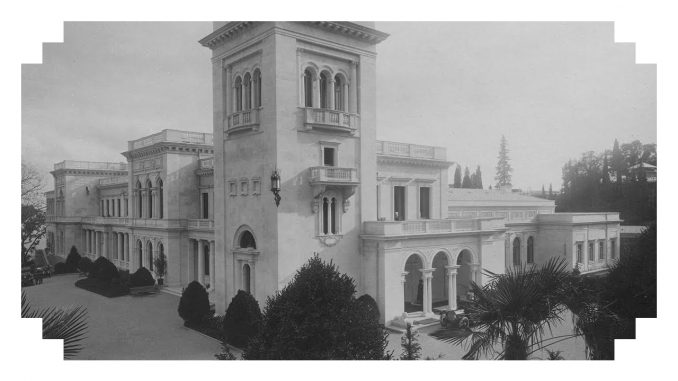
Thanks to the ongoing impeachment procedures against Donald Trump, Ukraine and Russia are, once again, headline news. While most people could not even point out Ukraine on a world map, there is another factor that completely evades most Americans in this time of the "all things Russian are unconditionally bad" narrative.
Let's look at one of the key issues that has impacted the West's view of Russia. In the Western mainstream media, we repeatedly hear that in March 2014, Russia illegally annexed Crimea despite the fact that a referendum was held. For your illumination, here is a map showing the Crimean peninsula (in purple) and the evolution of Ukraine in the post-First World War era:
Note that Ukraine was not granted ownership of Crimea until 1954, a very new development for Crimea's long association with Russia.
Let's look at how Washington saw the 2014 Crimean referendum. Here is a quote from an interview entitled "Why the Crimean Referendum is Illegitimate" with John B. Bellinger of the Council on Foreign Relations, one of Washington's most influential think tanks, from March 2014:
"Voters in Ukraine’s republic of Crimea opted to join Russia in a referendum Moscow called the starting point for determining the future of the peninsula. CFR Adjunct Senior Fellow John Bellinger, former legal adviser for the U.S. State Department, said the March 16 vote violates both the Ukrainian constitution and general principles of international law, which respect the territorial integrity of states. Despite concerns about the vote and Russia’s deployment of forces in Crimea, he said, the international community has limited options to overturn the result. But Bellinger added: "Russia may find that its support for Crimea’s independence might trigger referenda or secession movements that it opposes, such as in Chechnya."
The Obama administration and most European governments argue that the referendum violates both the Ukrainian constitution and international law. The Ukrainian constitution requires that any changes to the territory of Ukraine be approved by a referendum of all of the Ukrainian people. The requirement is consistent with general principles of international law, which respects the territorial integrity of states and does not recognize a right of secession by a group or region in a country unless the group or region has been denied a right to "internal self determination" (i.e., its right to pursue its own political, economic, social, and cultural development) by the central government or has been subject to grave human rights violations by the central government. These factors, which could give rise to a right of remedial secession under international law, are not present in Crimea.
International law prefers to preserve the territorial integrity of states and limit the right of popular self-determination because minority secession movements, if allowed to proceed without limits, do not reflect the views of the majority in a state and could lead to the breakdown of the international system." (my bold)
That is, the American model of how the international system should function.
As you will see in this posting, Crimea is a somewhat different case given its history. In 1744, Princess Sophie, the daughter of Prince Christian of Analt-Zerbst, a small Prussian principality, was sledged to be the wife and heir of the future Emperor of Russia, Peter III. Sophie and Peter were married in St. Petersburg Russia in 1745 and Sophie converted to Russian Orthodox and changed her name to Catherine. In 1762, Peter III came to the throne and threatened to incarcerate Catherine in a convent so he could marry his mistress. Instead, Catherine seized the throne through a military coup and began ruling Russia until her death in November 1796 at the age of 67. Catherine is better known to the West as Catherine the Great and the period of her rulership over Russia is considered by many to be the Golden Age of Russia. It was during her rulership that Russia expanded its territory as shown in light yellow on this map which shows the territorial expansion between the end of Peter the Great's rule and the end of Catherine the Great's rule:
In the bottom centre of the map you will note that the Crimean peninsula was added to the territory of Russia during Catherine's rule. Here is a quote from the Smithsonian magazine about Russia's expansion into the Crimea:
Catherine risked her reputation in the West as an Enlightened ruler, however, to expand her territory into Ukraine. While Catherine entertained European royalty and thinkers at her court, her armies fought in a war with the Ottoman Empire (modern day Turkey) for control of the Black Sea. Peter the Great had opened Russia up to the Baltic Sea, founding St. Petersburg on the Baltic Coast, but Catherine was determined to expand her south eastern frontier and develop a permanent Russian presence on the Black Sea.
When the Russo-Turkish War began in 1768, the Tatars who lived on the Crimea operated somewhat autonomously under a Khanate. The predominantly Muslim population descended from centuries of intermarriage between the native Turkic people and Mongol armies who had occupied the region during Genghis Khan’s time. They had a fractious relationship with the surrounding Russian and Polish-Lithuanian Empires because they raided their neighbors, engaging in human trafficking. As Russia expanded southward, these raids decreased in frequency, but continued to take place until the annexation of the Crimea.
The 1774 Treaty of Küçük Kaynarca temporarily ended the conflict, leaving the Crimea with nominal independence but giving Russia control of key ports on the peninsula. Catherine refused all offers from Prussia, Austria and France of further mediation, determined to continue pursue her territorial ambitions in the region. Catherine’s fellow monarchs ultimately accepted the loss of the Crimea’s independence, and Russia formally annexed the Crimea in 1783.
Russo-Turkish wars and three successive partitions of Poland during Catherine’s reign brought much of the rest of modern Ukraine under Russian rule after the region had spent centuries under Polish-Lithuanian control. Catherine’s victories enabled Russia to establish a Black Sea fleet. Special access to the Dardanelles and Bosporus Straits that connected the Black Sea to the Aegean Sea via the Sea of Marmara became a key foreign policy goal for Catherine’s descendants during the 19th century, contributing to the outbreak of the Crimean War (1853-1856)."
Russia's control of the warm water port at Sevastapol began in 1783 and played a key role in the strength of Russia's navy, a most important measure of the military strength of all of the world's most powerful nations at the time.
The close connection between Crimea and Russia continued through the First World War and to the end of the reign of Tsar Nicholas II. In fact, given the warmer climate of Crimea, the Russian royal family spent a significant period of time at their Livadia palace as shown on this video:
Here is a map showing how Europe was divided during at the beginning of the First World War:
…and here is a map showing how Europe was divided at the end of the First World War:
While the borders of Europe's member states changed dramatically in the post-war period, Russia still retained its ownership of the Crimean peninsula. This lengthy period of connection resulted in this:
As you can see, the eastern regions of Ukraine and, in particular, Crimea, have Russian as their unique mother tongue. While speaking Russian as your first language does not necessarily mean that your political leaning will be toward favouring Russia, it certainly has impacted voting patterns in Ukraine since it achieved independence from the U.S.S.R. in 1991 and, as shown on this map, had a significant impact on the percentage of Ukrainians who voted in a referendum on December 1, 1991 to break away from the Soviet Union with western Ukraine (the Ukrainian-speaking portion of Ukraine heavily favouring secession when compared to eastern Ukraine:
Those of us who live in nations that consist of people that are more-or-less ethnically and geographically homogenous cannot hope to understand the political environment of a nation like Ukraine. The West's blanket condemnation of Russia and its so-called annexation of the Crimean peninsula in 2014 would suggest that more of us need to educate ourselves on the history of Russia and Crimea in particular before we whole heartedly swallow the narrative that our political leaders and media foist on us.
Click HERE to read more from this author.
You can publish this article on your website as long as you provide a link back to this page.

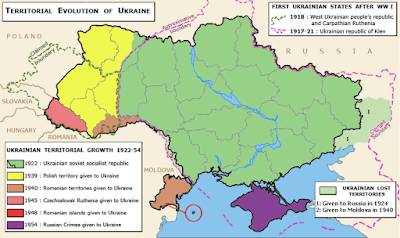
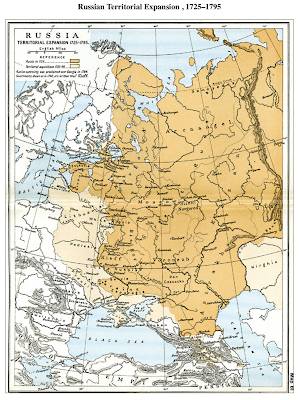
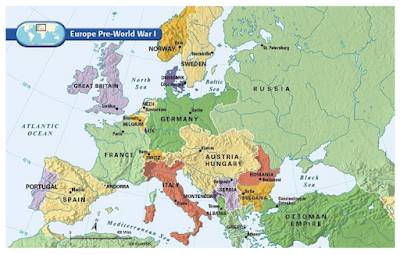
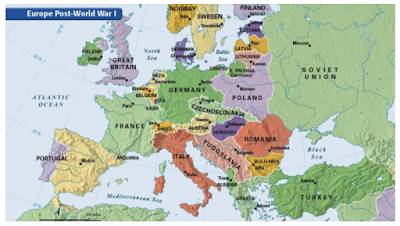
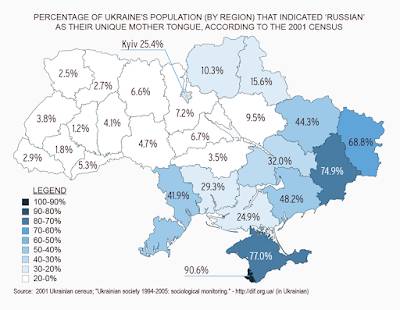
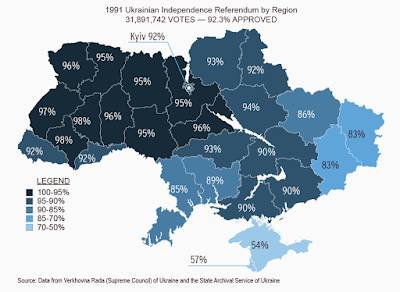
Be the first to comment